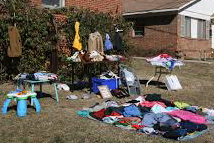“No one problem ever came to the fore, but all the historic fault lines would yawn slightly…Their relationship was like a chalkboard that had been erased over and over again but had not been washed clean in a very long time.”
 I am so sad that I have finished this collection of stories and must finally write a review. In fact, I actually read this book twice, but writing the review is like saying goodbye to people I may never see again, and these characters feel real, familiar, true to life, and ultimately memorable. I am not by nature a sentimental person – in fact, I may be more like some of the characters in this book than I am willing to admit – so this reaction is not characteristic. And when I say these short stories are among the best I have read since Robert Boswell’s The Heyday of the Insensitive Bastards, and then add that they are so clean, neat, and perceptive in their style and presentation that they remind me of those by Andre Dubus (the father), I am not exaggerating. Kane’s stories are sensitive, psychologically astute, and filled with observations that will expand your own viewpoint, maybe even allowing you to see yourself in new ways.
I am so sad that I have finished this collection of stories and must finally write a review. In fact, I actually read this book twice, but writing the review is like saying goodbye to people I may never see again, and these characters feel real, familiar, true to life, and ultimately memorable. I am not by nature a sentimental person – in fact, I may be more like some of the characters in this book than I am willing to admit – so this reaction is not characteristic. And when I say these short stories are among the best I have read since Robert Boswell’s The Heyday of the Insensitive Bastards, and then add that they are so clean, neat, and perceptive in their style and presentation that they remind me of those by Andre Dubus (the father), I am not exaggerating. Kane’s stories are sensitive, psychologically astute, and filled with observations that will expand your own viewpoint, maybe even allowing you to see yourself in new ways.
The title says it all. Each character here (and some of them repeat in several stories) is facing an event which may change his/her life significantly. As the characters’ stories unfold, each person comes “this close” to having a life-changing revelation, only to have the opportunity escape them, in most cases, through their own inactions, as they turn back to the comfort of the familiar and the habitual, or as they ignore the possibilities. In fact, I think only one character in the book, a mother who has lost a child, seems to come to real recognition and resolution. Most of the others muddle through on their own, having come “this close.”

All the stories deal with issues of relationships and their complexities, and three stories are “stand alones,” in which the characters do not reappear in other stories. “Lucky Boy” tells of a man in New York City who takes his laundry to the same small Korean laundry every week. The two women there begin to do favors for him, sewing on buttons and generally favoring him. When one of them mentions that her ten-year-old son needs help catching a ball, he offers to help him on Saturdays at the park. Both sides completely misunderstand the thinking of the other. In another story, “Evidence of Old Repairs,” a mother who is a secret drinker, tries to hide the evidence from her husband, who is “making amends” after an affair gone wrong. Her behavior affects her daughter who is feeling the stress in the parents’ relationship. The third “stand alone,” “Next in Line,” introduces a mother whose toddler child, dies after a sudden illness. Some weeks earlier, the mother had been admonished by an older woman at CVS when she ignored this 15-month-old child who was having a tantrum. She begins to think in terms of cause and effect, regarding the older woman as an “angel of death,” as she deals with the unresolved guilt she feels for the child’s sudden death.

“First Sale”
My favorite story, “American Lawn,” tells of a woman who responds to an ad in which a man is looking for a piece of land for a vegetable garden. The woman, Pat, agrees to let Kirill, a Croatian immigrant, use her back yard, but she becomes jealous when he becomes friendly with her next door neighbor, Janeen, a young married woman who is lonely and pregnant (and who reappears in other stories). All three of the main characters see their relationships with each other in different ways. The sensitivity with which the author develops these characters and reveals their misunderstandings, especially the misunderstandings involving Kirill, leads to an unforgettable story which is not based on what happens in the action so much as it is based on the reader’s sudden understanding of what the various characters are really thinking. Here the “ah-ha” moment is a quiet “oh, dear,” as the reader suddenly understands what is happening.
It is this quality of Kane’s work – her presentation of events in which the reader draws conclusions based on what s/he imagines the characters thinking, based on their actions, which makes these stories so brilliant and so subtly revelatory. Being able to see some of these characters, including Janeen, in other stories adds to the power of the writing, since the reader is given additional entrée into how these characters might have learned and changed in additional stories over time.
Two other sets of characters have repeating roles. Maryanne Leary, whose husband has recently left her and her five-year-old son Mike, has a yard sale in “First Sale,” in which she decides to sell everything she can that has belonged to her husband. Little Mike believes he should participate, selling a small, useless bottle containing some water which he has brought back from a vacation the previous year with his father. “Double Take” takes place about twenty-five years later. Maryanne is no longer a victim of circumstances, having faced her life and made decisions.
One family appears in three stories: John is married to Elizabeth; their daughter is Hannah. Elizabeth takes to her bed periodically, retiring from life completely for weeks on end. In “The Stand-In,” Hannah, seventeen, is traveling with her father to Palestine. When she sees her father enjoying himself for the first time in ages, she shows how much she misunderstands him. “The Old Beginning” shows John and Elizabeth years later, when Hannah is out of college and unable to vacation with them. The final story, the wonderful “Local Birds,” takes place during a retirement party which Hannah, now married with children, has organized for John, who is now leaving his office at the university at the age of ninety. The lack of communication among his colleagues is palpable, and predictable, but Hannah feels as if she is doing something to commemorate his life.
Whether or not you are a fan of short stories, Jessica Francis Kane’s stories are so good that I urge you to read this collection. I am still recovering from this book, though I finished it (for the first time) this past Sunday. Now, three days later, I am reluctant to close out this review because it feels so final. Perceptive, astute, and remarkably concise, these stories are among the best of the best.
ALSO by Jessica Francis Kane: THE REPORT
Photos, in order: The author’s photo is from her Facebook page. The other photos relate to images found in the stories themselves.
The photo for “First Sale” appears on http://en.wikipedia.org
The small backyard garden may be found on http://greenplanetethics.com
Feeding the squirrels: photo taken near Coventry Cathedral: http://www.mikedowney.co.uk/
Cat and mole: http://promethios.wordpress.com
ARC: Graywolf



